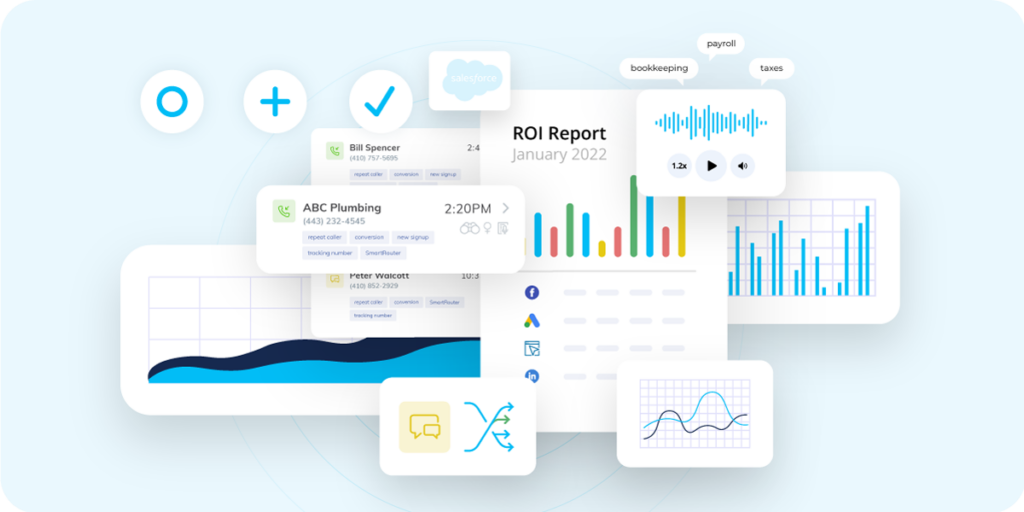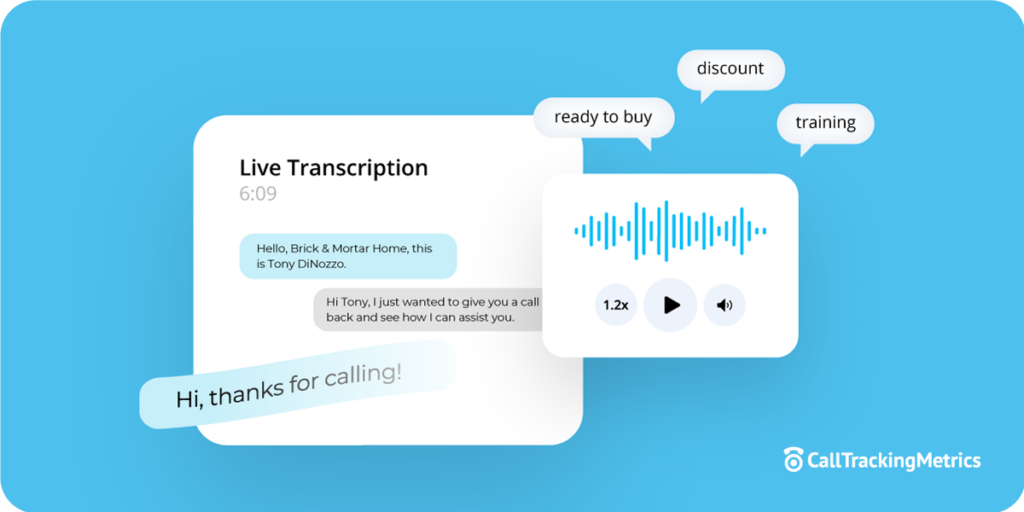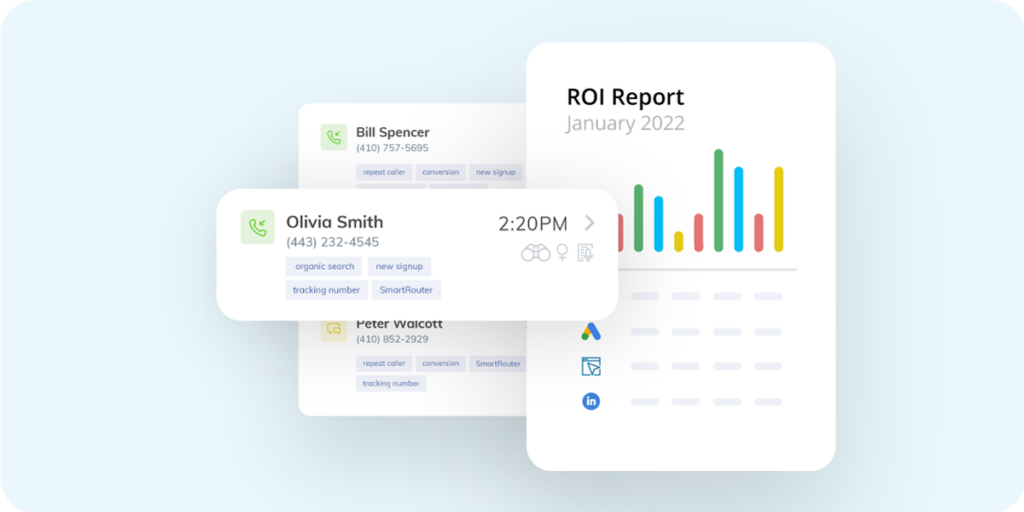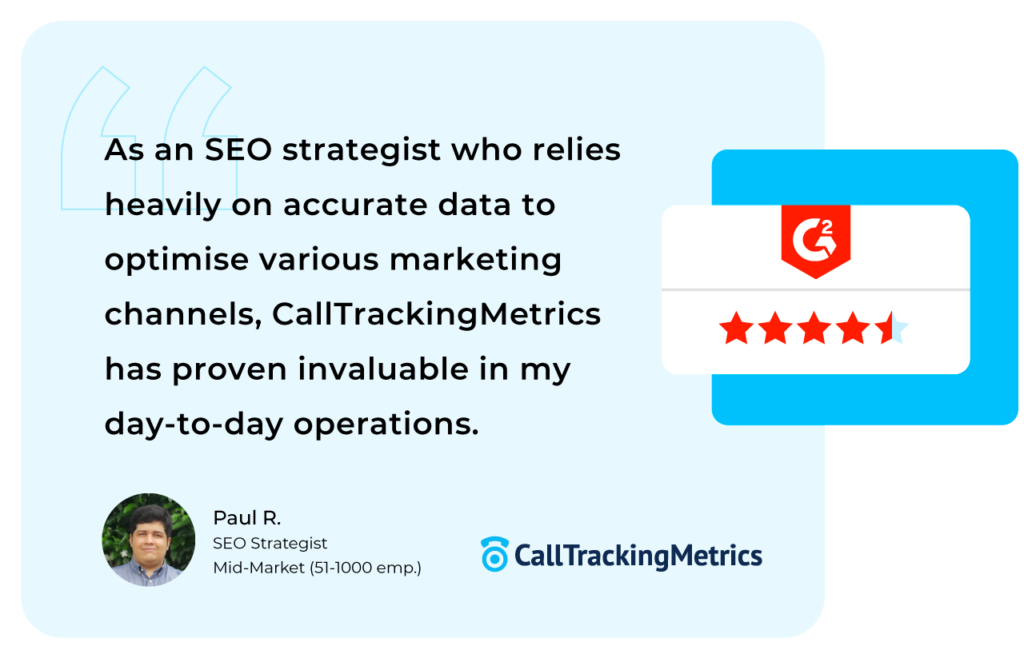5 Reasons Your SEO Strategy Isn’t Complete Without Call Tracking
An SEO strategy used to be so simple. Pump your website full of keywords and watch the visitors flock to your site. In an admirable attempt to make search slightly more valuable to human beings, search engine optimization has gotten much more complicated.
Where a little technical, mixed with some on-page SEO once went a long way, now, a more holistic approach is needed to move the needle. SEO strategists need to understand both the company and customer inside and out to match needs and paths to purchase. SEO is a marketing channel, and works best when it meshes with the entire marketing mix. Looking outside of your traditional SEO tools, there’s value to be found with software typically thought of for paid search. There is SEO value to call tracking.
Why Are We Optimizing Search Anyways?
Call tracking, at its core, is a method of marketing attribution. It’s not a ranking factor. You won’t see it listed in any algorithm updates. There’s even a popular myth that call tracking can hurt SEO efforts–spoiler alert: it doesn’t. So why is call tracking a part of a complete SEO strategy? Is it just so CallTrackingMetrics can rank for “SEO call tracking?” It’s not that (but we’d take it). It comes down to the purpose of search engine optimization in the first place: improve rankings, to bring more visitors to your site, to convert them into customers.
SEO isn’t just a volume game. It’s a relevancy game. You’re not trying to bring any visitor to your site. You’re trying to bring visitors who are likely to become customers. That’s where call tracking for SEO shines.
How Does Call Tracking Help SEO?
To be fair, traditional call tracking, matching a caller to a direct mail campaign or billboard might not amount to huge SEO wins. But modern call tracking? The kind of call tracking that brings together dynamic number insertion (DNI) with conversation analytics and intelligence? It’s a must-add for a sophisticated SEO strategy. Here are five ways to bring call tracking into your SEO approach.

1. Keyword Research Right From the Source
Nothing fuels an SEO like a little keyword research. Daily reviews of keyword rankings, site crawls, and competitor research looking for new opportunities to climb the rankings on Google. Call tracking brings a whole new perspective to keyword research, and it’s a big one: your actual customers. Key features of call tracking SEOs can use to mine for insights:
- Call recordings
- Transcriptions
- Call scoring and tagging
- AI-powered conversation intelligence

These all give you a first-hand look (or listen!) to how your audience actually speaks, and how they might search for your brand. You might discover multiple customers asking the same questions, prompting you to create new content that can rank and answer that question earlier in the buyer’s journey. You might discover your audience uses completely different terminology than you’ve been trying to rank for. If you’re trying to attract visitors likely to convert, using call tracking to learn from those who have already converted is a no brainer.
This keyword insight also complements broader trends in local search behavior. A local SERP study from Synup found that the highest-ranking results often belong to directories and business-specific pages that match searcher intent precisely, reinforcing the value of grounding SEO content in real customer language.

2. Page Relevance and Performance
Not to over simplify the roles of websites in SEO, but sites don’t rank, pages do. Google et. all are trying to serve up the page that best matches the searcher’s intent. Google’s got their own algorithms and ranking factors to attempt that best match. On your end, you can get an indication of how well, or poorly, Google’s accomplishing that.
- Organic Engagement Rate (GA4) – Google Analytics 4’s answer to the popular vanity metric, bounce rate. Low engagement rate means your content isn’t resonating with visitors.
But engagement rate alone doesn’t tell you much about why there’s a mismatch between the original intent and the content they were served. Call tracking can add some much needed context to the SEO picture. Call tracking matches conversations to the pages that generated them, and source. So you can drill down and listen to calls and review transcriptions for key organic pages and see if the conversations reflect your focus keywords. You might find out a page with a ton of visitors, and high engagement you would have considered an SEO win, might not be producing any worthwhile conversations. Which brings us to the next key in SEO call tracking…
3. Optimize to Conversions, Not Visitors
Increasing visitors to your website feels great. A year-over-year increase in organic traffic is a lovely stat to pass to leadership and get the pat on the back you deserve for your hard work. Assuming business is good, there likely is a correlation between your increased traffic and revenue increases. But there’s a huge disconnect if revenue is stalling, and you’re still reporting positive SEO results.
There’s a reason why SEOs report on keyword rankings and increased traffic–it’s really easy to grab from your analytics tools. There’s nothing wrong with this approach either, but there is a better way. Instead of optimizing your efforts for the greatest volume of traffic, turn your sights on conversions.
In order to get that done, you’ll need to know a few things:
- How do you define a conversion? There are lots of activities a site visitor can take. Decide what matters the most to your team.
- Form submissions
- Calls
- Chats started
- Ecommerce transactions
- Do you have a way to measure those conversions? You’re probably already tracking form submissions, and maybe eCommerce transactions in Google Analytics 4. You’ll need to complete that conversion picture with call tracking software.
- Can you accurately report on those conversions? Wherever you prefer your source of truth, Google Analytics, a CRM, or custom dashboards, you’ll want a call tracking software that integrates in a way that allows you the flexibility to define your custom conversions.
4. Prove the ROI of Your SEO Efforts
Whether you’re putting together reports for your leadership team or your clients, the conversation is going to go much smoother if you can tie your SEO efforts to tangible results. Just like call tracking gives you a chance to optimize based on conversions, it also gives you a chance to focus your reporting on conversions too.

Through scoring and tagging, call tracking gives you the ability to segment conversations based on quality. You’ll be able to see which conversations turn into leads, which turn into great leads, and even which turn into sales. While it’s hard to include a value for an SEO-driven site visitor, it’s much easier to show the value of a sale. Call tracking gives SEOs a little extra firepower to show off their results, get buy-in and budget for their strategy, and the full picture to keep clients working with you.
5. Paid Search and SEO Alignment
Call tracking is a popular advanced tool for paid search strategists, automating conversions back to Google Ads and informing smart bidding. With SEO call tracking in the mix, both teams get to play with the same data, in the same software, both in real-time. Just like how call tracking brings sales and marketing teams together, when your SEO and PPC strategists are spending time with the same data, a natural alignment forms.
Beyond this natural alignment, there’s a lot of alignment to be gained between paid and organic. Just like SEOs can use call tracking for keyword research, paid strategists can gain the same insights and take note of where the two can dominate SERPs together.
Another bonus of an advanced call tracking solution is that you gain visibility to the full path of the buyer’s journey. It’s rare there’s only one interaction before a sale, so call tracking can give insights into how SEO, paid search, and any other interactions played a role in a single conversion.
Call Tracking for SEO and the Full Marketing Mix
Phone calls aren’t likely the first thing you think about when considering SEO strategies. But, it’s not the first thing your competitors are thinking about either. SEO call tracking is an advanced perspective on tried and true approaches.
Standard keyword research is being done by everyone. Researching the words spoken by your audience for key insights? You’re ahead of the game. Then as you start to bring additional conversation intelligence, conversion tracking, and good old fashioned team alignment you can start to make really impactful SEO choices around your pages, site, and overall strategy.

The best part of call tracking is it’s not just an SEO tool. It’s most popular for team’s heavily using Google Ads, but it’s a way to make smarter marketing decisions across your entire marketing mix. The goal of software like CallTrackingMetrics isn’t to improve a few campaigns. It facilitates a smarter approach to all marketing decisions and a more efficient buyer journey from awareness, to lead, to sale.